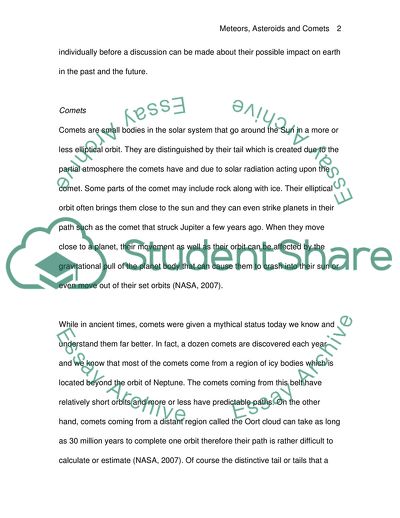Cite this document
(Meteors, Asteroids and Comets Term Paper Example | Topics and Well Written Essays - 2000 words, n.d.)
Meteors, Asteroids and Comets Term Paper Example | Topics and Well Written Essays - 2000 words. Retrieved from https://studentshare.org/astronomy/1708629-meteorsasteroids-and-comets
Meteors, Asteroids and Comets Term Paper Example | Topics and Well Written Essays - 2000 words. Retrieved from https://studentshare.org/astronomy/1708629-meteorsasteroids-and-comets
(Meteors, Asteroids and Comets Term Paper Example | Topics and Well Written Essays - 2000 Words)
Meteors, Asteroids and Comets Term Paper Example | Topics and Well Written Essays - 2000 Words. https://studentshare.org/astronomy/1708629-meteorsasteroids-and-comets.
Meteors, Asteroids and Comets Term Paper Example | Topics and Well Written Essays - 2000 Words. https://studentshare.org/astronomy/1708629-meteorsasteroids-and-comets.
“Meteors, Asteroids and Comets Term Paper Example | Topics and Well Written Essays - 2000 Words”. https://studentshare.org/astronomy/1708629-meteorsasteroids-and-comets.


